
30km away from Seljalandsfoss towards Vik is another beautiful waterfall called Skógafoss. There's a camping ground right beside it, and with the day being so wet and miserable, there were some sorry-looking campers hanging around under the cover of the toilet deck, gazing out at their sodden tents.
Like a lot of the rivers and streams in Iceland, the water from Skógafoss is potable, cold and refreshing, so the boys had fun refilling their water bottles out of the cold stream.
The waterfall is an impressive drop. At 60m high and 25m wide, it tumbles into a small pool, throwing up huge amounts of spray.
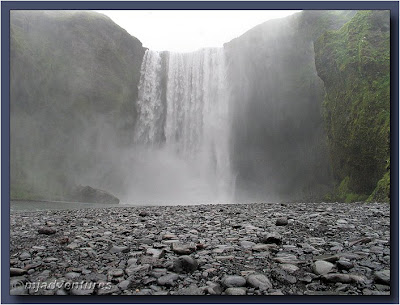
It was impossible to get any images up close to the falls - there was simply too much water in the air. The frustrated photographer had to down tools and become only an awe-inspired viewer for a change!
Iceland is a country full of myth and legend, with stories (sagas) based on their history and folklore. Skógafoss is not without a story of its own.
It is said that Þrasi Þórólfsson, who was the first Viking settler at Skóga, hid a chest filled with gold coins in a cave behind the waterfall. It's rumoured that on sunny days, you can see the gold glinting in the water. Many people have tried to find the chest, and legend says that one person did find it. He tied a rope around a ring attached to the chest and tried to pull it out of the water. Unfortunately, the ring detached from the chest and that's all that the man came away with. Apparently the ring was used on the Skógar church door, but is now on display at the Skógar museum. We didn't stop to see it!
J noticed that all the airborne water was settling on some of the plants so that they were covered in big, fat drops of water.
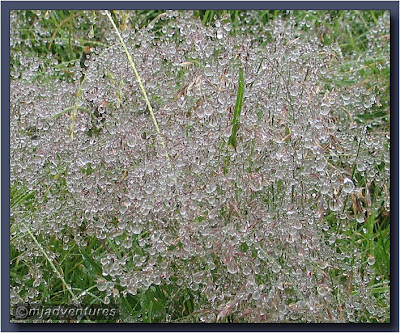
In close-up, it was even more beautiful.
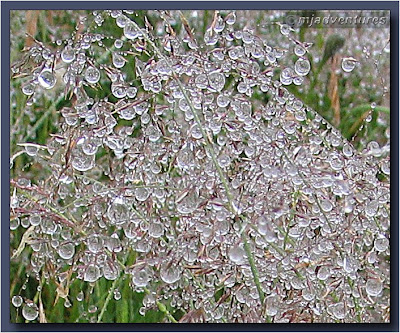
We left Skógafoss and headed for the Mýrdalsjökull glacier. We soon realised that "jökull" is Icelandic for "glacier"! Because of the wet weather and low cloud cover, we knew that we weren't seeing the glacier in its best form - apparently it is truly beautiful when viewed from the beach in clear weather. However, we couldn't be choosy.
Getting to Mýrdalsjökull is to do so by smell. Travelling along the main Ring Road 1 towards Vik, we crossed over a bridge which carried us over a muddy river - quite unlike any of the other rivers and streams that we had seen in Iceland. The smell of sulphur soon filled the car and the boys were almost gagging! The left turn for the glacier is on the other side of the bridge.
We travelled alongside what was now dubbed the "stinky river" on a narrow gravel road for about 5km before coming to the carpark at the end. The foot of the glacier is a 500mwalk across stones and rocks and we set off under spitting rain.
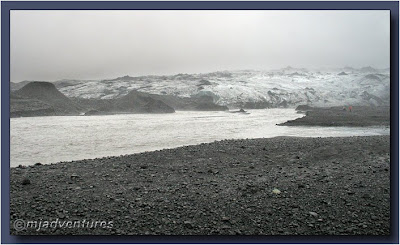
The sulphur-laden water came from the glacier and swept down the stinky river at a furious pace.
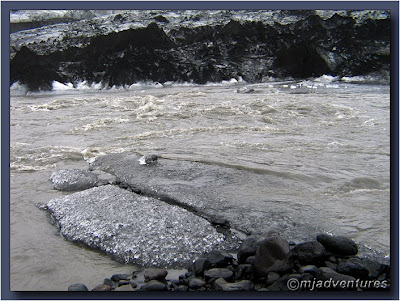
The 4th largest (590km²) glacier in Iceland, Mýrdalsjökull is also the southernmost glacier. Its highest point is 1493m but on the day we were there, we couldn't see more than 200m up.
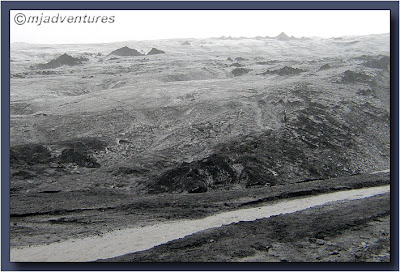
We saw rocks that appeared to be encased in ice, but given the swirling water around them, we ascertained that it was more likely to be crystallised minerals.
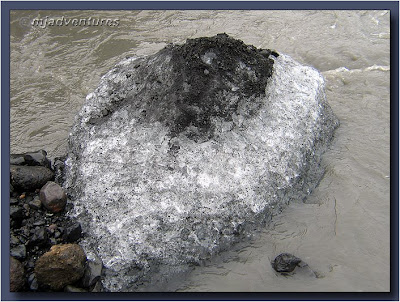
We walked right up to the base of the glacier to take photos and for the boys to climb a little way up the ice.
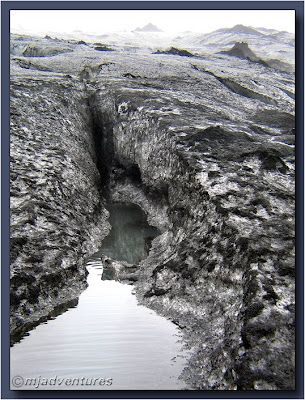
As it started to rain again, we left the glacier tongue and walked back to the car.
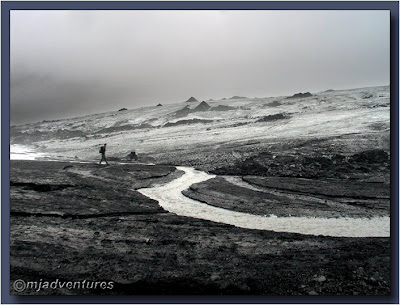
Back on the main road, we continued towards Vik. The traffic had thinned out now, as most of the day trippers from Reykjavik only go as far as Skógafoss. We saw some contrasting scenery along the way.
Coming into Vik, we soon realised that it was a small town, and we were feeling a bit disappointed that we had come all this way for what appeared to be not a lot. Filling the car up with gas, I spotted these quaint little cabins across the road which seemed to mirror the shape of the overhead mountain.
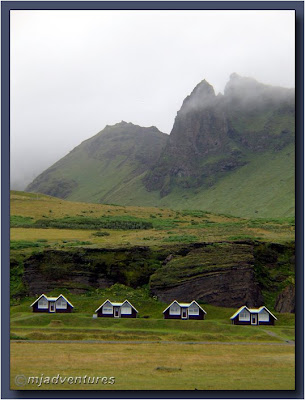
We decided to head back to Reykjavik, but I spotted a left turn in Vik which appeared to head for the beach. We came to the end of the road and got out to drop down onto a magnificent black sand beach. This is where we became happier about coming to Vik.
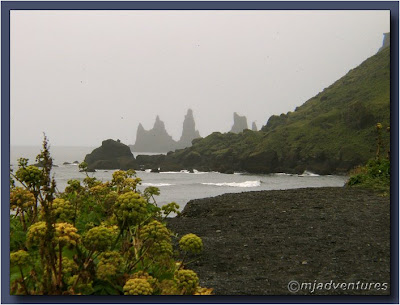
The wildlife was plentiful. Overhead, Arctic Terns wheeled and screamed, Puffins flapped ungainly out to sea and back again after fishing, and a couple of Skua Gulls floated effortlessly on the wind. They all had nests in the big cliffs which towered over the beach. We also spotted a lone seal fishing close to the beach and watched as it caught a few fish; resting on the surface to eat them before diving for more. It didn't worry about the puffins floating on the surface, so maybe fish is preferable to puffin in a seal's diet!
The 3 jagged rock formations sticking out of the sea are called Reynisdrangar.
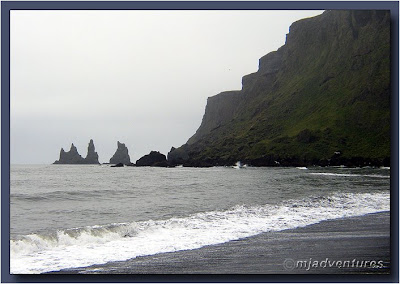
These 3 particular rocks are part of another Icelandic story. Reynisdrangar was formed when two trolls dragged a three-masted ship to the shore. Unfortunately they ran out of darkness and, as we all know, trolls do not survive in daylight. As the sun rose, the trolls and the ship turned to stone. The ship's masts were the only parts visible above the water. They are named Landdrangur, Háidrangur and Langsamur; the tallest standing at 66m.
The boys were amazed (as were we) to find a memorial (of which I stupidly forgot to take a photograph) which commemorated a German fishing boat that was wrecked off the beach with loss of some crew. The memorial read in German and was erected by the fishing company to say thank you to the Icelanders who had risked their lives to save crew members.
As an aside, we were surprised to find that some Icelandic words were the same in German and during the trip, we all had fun translating signs containing traces of German in them.
Although we were having great fun on the beach, it was quite cold, so we headed back to the warmth of the car to start the journey back to Reykjavik. This was to be our last night in the capital before heading to the West Fjords.
Next Chapter: Flying to Ísafjörður






0 comments:
Post a Comment